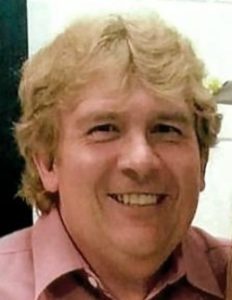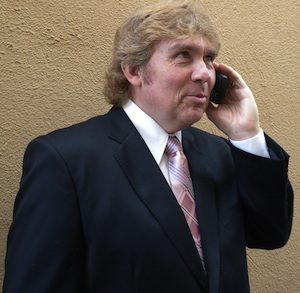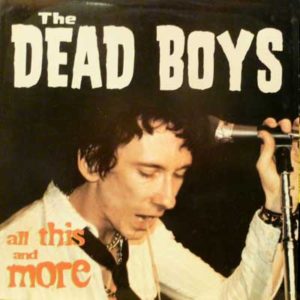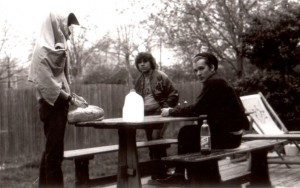For Lawr.
Category Archives: friends
OK, I Think I am Back (and Steve Would Like This)
Ugh!
I have had so many thoughts about what to write and who to write about here over the months since our friend Steve passed away, and nothing seems worthy.
My new band, Jackknifed Big Rig played The Clash’s Safe European Home our last set, and I dedicated it to Steve, and Diane even filmed it. But, the sound was funky and it was not worthy of a You Tube, although we have a fancy schmantzy gig coming up July 14, at the storied Hotel Utah in San Francisco, opening for Patrice Pike. And, the plan is to play it again then and try to film again and then post.
But, this Family Guy—The Griffin That Stole Christmas–has become a favorite cos of one-liners and cut-aways like this, and I know Steve would have busted up.
So, I return with this. And, since the ice is broken, well, more to come.
On Death and (Somebody Else) Dying
NOTE: Steve Moyer’s friends in the fantasy and baseball industries have begun a GoFundMe to help support his daughters, Harmony and Mary, who face college and adulthood without their pop. Please feel free to donate in honor of our friend. The link is GoFundMe Steve Moyer kid fund.
I have been trying to get my head around our friend and colleague Steve Moyer’s untimely passing last Thursday.
If you have followed my ramblings over the years, you know I have had a number of brushes with death myself, and that my own wife, child, and dog all left this plane within a year of one another between July of 2005 and April of 2006.
 What these rather intense experiences seem to have made me, however, created a sort of paradox. On one hand, I accept the inevitability of our own human experience, understanding our time here is indeed finite and that there is no fairness within the amount of time we are granted here on earth.
What these rather intense experiences seem to have made me, however, created a sort of paradox. On one hand, I accept the inevitability of our own human experience, understanding our time here is indeed finite and that there is no fairness within the amount of time we are granted here on earth.
Similarly, I can put it in a sort of detached-automatic mode, for lack of better verbiage, making certain the trash is taken out, that dinner is made, and that the appropriate persons are advised appropriately of the departure.
Certainly, Steve was core to a lot of the fantasy industry, and having been colleagues for a quarter century I seem to be one of those who knew him the longest, and perhaps as well as anyone within our circle.
Still, it never occurred to me that Steve — hell, that any of us — would leave untimely, so soon. Further, I have had enough head butts with Steve that I was surprised to find myself at the center of coordinating updates about him, being the source for articles and news as well as disseminating funeral information.
I know I am not alone in banging egos with Steve, for as his fiance, Samantha Drennan — with whom I have unfortunately become friends under the worst of circumstances — acknowledged that Steve “argued with everyone about everything.” So I was happy Steve and I had a good clearing of the air last First Pitch, Arizona.
Furthermore, I was glad to help out during the couple of days subsequent to learning of Steve’s passing by sharing information and emailing so many who knew and cared about him. I helped my mate, Roto Expert’s Scott Engel gather information both for an article about Steve, and together we plotted a Hall of Fame Hour — one of the shows Scott hosts on FNTSY— on Steve this coming Monday (listen from 7-8 PM, ET). I posted and commented on the Rock Remnants site that was Steve’s imagination, where Peter Kreutzer, Gene McCaffrey, and I made a musical home for our writing outside of fantasy sports.
The bulk of these activities occurred while I was still at spring training, usually one of my favorite trips of the year. For, in March, baseball is still fresh and optimistic, players are happy and mostly healthy, and drafts are gearing up.
Instead, within the throes of my “busy-ness” handling Steve things, I felt distracted. I was disinterested in going to games and drafting and interviewing players. And, the truth was, I just wanted to go home and be with my family.
I did keep wondering, however: Why I was so ambivalent with respect to something I really enjoy?
Then it occurred to me that I was subconsciously being so busy detaching that I did not have to acknowledge how bummed I am. In discussions with several of the groups and leagues in which Steve and I both participate, I realized what an integral part of my life Steve was, and I guess vice versa.
And, that meant the bummed disinterested feelings I was trying to ignore were actually grief.
Life is such a silly ephemeral thing. So difficult to understand, let alone make reasonable. And yet it is wondrous and beautiful, for though in the end it takes us from one another, certainly prior to that life gives us the gift of one another.
It certainly is a shame, however, that we have forget to embrace this gift until that appreciation is no longer corporeal.
One of the bands that Steve and I shared a love for was the Small Faces, and perhaps their best-known song was “Itchycoo Park.” As a dog owner, and husband of an animal lover, I like to imagine The Rainbow Bridge in a sort of “Itchycoo Park” sense.
Steve Moyer Has Died
- Steve loved numbered lists.
- He was a good dresser. He always wore shirts with patterns, and often with snaps.

- He also recognized the dress of others, pointing out a drummer or bass player who had made a good or bad or interesting choice in a video.
- He and I invented the Fantasy Baseball Guide together. Steve was working for Rotowire, my partner in the Guides for a couple of years, and they gifted me with an excellent collaborator. Having a cool and smart partner on the payroll was a beautiful thing for me, and gaining a friend was even more important.
- Steve always had ideas, about everything. And his resistance to seeing the middle ground was sometimes frustrating, but often also endearing, which is why everyone ended up giving him a lot of space to be himself. His ideas were passionate and heart-felt and often right. Or valuable, even if you disagreed. Or when he was wrong.
- He was more punk than the rest of us. He said so.
- When we put together our Essential lists, at the start of Rock Remnants, there was no more surprising item on any list than Steve’s choice of More Specials.
- Steve always said the Guide was the best baseball mag out there. Who doesn’t like that?
- There were always surprising things about him that would come out in conversation. Like, I’m dating a minister. Or, My country band does [that song] this way…. Or, when I’m at the gym I have to listen to this crap. As if he didn’t know he had other choices to listen to what he wanted. But he did not take to the streaming world. To someone who has driven through Times Square listing to Supershit 666 at maximum volume with Steve, on DVD, these seem like oxymorons. Who is this person who contains such multitudes?
- And who gets pissed off when the music isn’t pushing it enough. Even when it is folk music, and it really shouldn’t.
- Steve suggested we include a broad range of fantasy voices in the Guide, and helped me to draw those voices in. I’d always been shy about the fantasy industry, a phrase that is particularly ludicrous on Oscar night, but Steve in real and important ways introduced me to people I already knew from LABR and Tout, and helped forge friendships with them that have become a central part of my life. I’m not sure why I didn’t think of that, but with Steve’s help I did.
- Steve named Rock Remnants. It was his name. And when my implementation of his name wasn’t to his liking, he was fierce in his defense of his vision. That led to some uncomfortable moments, and we all know what happens to muscle that is challenged.
- The perfect tribute would be to burn a CD of cuts Steve loved. A mix tape on CD. Because Moyer didn’t stream. In the meantime, how about this song from The Upper Crust:
Allman Brothers, Dreams
My old friend Russ and I fashioned ourselves in the mode of Neal and Jack, at least sometimes, living a sort of vagabond life of simple ascetic pleasures traveling the world the way the monks of Tibet once famously did.
That meant hitchhiking after school from St. James to Cold Spring Harbor to try on and sometimes buy Hit Em Hard corderoy work pants, baggy the way they wore them back in the depression. If we found a beer or a J to go along with our Camel cigarettes we would enjoy it, and when we got hungry some yoghurt usually did the trick.
Most days we played basketball in Gaynor Park. There was always a game on the single court there, and we’d rotate in and out, playing full court hard, against our high school friends, and Freddy and Jay and others who had cycled back from Vietnam and brought a steely dark humor and cynicism to our lives.
The hoops court at Gaynor Park was the locus for our social life. This is where you went when you wanted to find your friends, who were either jamming on the court or flopped over the concrete pump house on the other side of the unused tennis courts. I didn’t know how all the boys and girls who spent so much time in that strip of tarmac, grass and concrete ended up there, it all seemed magical, but some part of it was because the Eastman clan, Russ and family, lived catty corner across the avenue.
It was there, at Russ’s house, that we hung out at lunch, and on days when school was shortened for testing. It was there we sat in the yard discovering that granny smith apples and Madeira Rainwater were an incredible combo. It was there that we watched Bogart movies, read Tin Tin (Rich, having colored all the dog images in a book with a yellow marker: “Don’t eat the yellow Snowy.”), and learned what Thai stick was (in the garage, in case it was volatile).
Russ and I also spent many weekends hitchhiking around Long Island, setting some goal (Hey, Southhampton!) and often making it there and back. The adventures weren’t usually dramatic. A dip in the ocean, flirting with some girls who droves us two miles, finding somehow some beer. Not exactly Tibetan simplicity, but basic, elemental, life distilled.
We talked to everyone. Drivers who picked us up, of course, but also road workers, and convenience store clerks. The workers in Army Navy stores and wherever we went to buy Dannon yoghurt as a snack. Local gossip, news, the weather, that downhome chatter was part of a package of values that we developed and shared and which I think has endured. In later years, when we were actually in control of the car, we’d stop and help people whose cars had broken down, Russ making them feel safe as we helped or found help for whatever the problem was.
We often found ourselves, because of our long hair and baggy pants, talking to police officers who assumed we took drugs. I remember a number of times that we chatted up those cops, while holding a joint or two, talked seriously about the problems with Nelson Rockefeller’s increasing penalties for pot possession, and managed to save our hides by good grace and luck and maybe a certain amount of innocent guile.
Until we didn’t, at which point our wanderings and self-inventing become more publicly known at home, and lawyers had to be called. We’ll blame Frank Zappa for that. We ate the yellow snow, metaphorically at least.
Through all of this we listened to a lot of music. And the music that we listened to most was the Allman Brothers. When I heard from Russ’s sister that he’d died this past Saturday I thought about his cancer, and the unrelenting beat of disease that transforms a life of love and devotion into an unrelenting agony and violation of all of that. And I ached, for the many years in between those strange halcyon days Russ and I shared figuring out how to live in the world, and these strange days when whatever script we’ve been given makes the ending seem as inevitable as one of those Bogart movies. And much more terrible because it isn’t just a story.
I started thinking about this Allman’s tune today. It’s from their first album, which for some time was underappreciated, though nobody cares anymore from whence the good stuff came. And this is the good stuff.
So sit with Russ and me on the pump house, with our friends, and argue about Jaimo and Butch, and Duane and Dickey, appreciate Berry’s amazing bass line, and think about motorcycles and eerie coincidences and terribly sad moments. And raise a Stegmaier, please, for Russ. And don’t klunk.
Live Supershit 666
Not really.
Saw my old friend Jason Grey today. We figured out we hadn’t seen each other for three years. He helped me out big time and happened to mention that my greatest contribution to Remnants for him was turning him on to Supershit 666.
So I looked and found this British cover band playing Star War. Every song on that little EP is a 10, so this is as good or bad as it gets. Supershit was a studio-only supergroup and this is the best and only live version of a SS666 song I’ve ever seen.
Actually it’s a little Supershitty, but it’s fun to watch the drummer. I’d be happy to play with him. I think the bass player is sitting on the couch.
For Jason.
Dead Boys, All This And More
One of the thrills of the punk years was the primacy of singles. US bands would launch with a self- or independently pressed 45, looking for enough buzz to get a major label deal. UK bands and labels eased the way into the US market by dropping 45s into the indie record stores, where some people, I was one, would hang out and hear the choicest cuts on the store’s record player.
 These singles came, usually, with picture sleeves. Sometimes they came with other gimmicks. I’m sure every punk band wanted a hit single, but most of these weren’t destined for radio play. They were meant as samizdat from the heart of DIY RNR, a beacon looking for similar youths with guitars and loud drums. If you had a single, you had a calling card at least.
These singles came, usually, with picture sleeves. Sometimes they came with other gimmicks. I’m sure every punk band wanted a hit single, but most of these weren’t destined for radio play. They were meant as samizdat from the heart of DIY RNR, a beacon looking for similar youths with guitars and loud drums. If you had a single, you had a calling card at least.
One true thing was that there were some great songs released, and another true thing was that many were followed by fairly crappy albums.
The Dead Boys album leads off with their great single, Sonic Reducer, and is followed by a collection that sounded pretty strong in its day. Looking back at it now, what seemed like great energy and clever arrangements then seems today a little obvious and not quite as hard as they should have been. Such is context.
Gene points out, however, that this album should have been on the Rolling Stone Punk Top 40 Albums, and he may be right. It was historic, one of the first true punk albums on the shelves. I’m not sure of that importance as I listen today, but I am nostalgic. See, I actually performed on the album as a musician, of sorts.
The cut is the second track, All This and More. My girlfriend’s sister’s boyfriend, Jim, was an assistant engineer on the album for Genya Ravan at Electric Ladyland. One day we were hanging out there, maybe waiting for him to get off work, when he brought us into the studio. It was the weekend, for sure, it wasn’t someplace we could wander in to usually. But on this day we got headphones and instructions to do the hand claps that lead off All This and More. And we did them and are on the record.
I think. Because I’m assuming our hand claps were good enough. I’m assuming that Genya didn’t get some other young people in to do better hand claps. No way to know that now. In any case they’re good claps. Not as good as the hand claps in the Stooges’ No Fun, but good enough for All This and More, which has one of the great weird first lines in all rock songs.
So, Gene reminded me that I probably performed on a record he thought should be in the Top 40 of Punk albums, even if it’s the elpee that displaces Blink 182.
What a joke.
In other words, we didn’t get any royalties or credit. And I haven’t played the record since before it came out, which I guess is why I forgot about this story. Until now. But there it is. History, perhaps.
Remembering Richard.
Three years ago my friend Richard died. He and I had been occasional tennis partners, often shared dinners with mutual friends, and enjoyed talking about music.
He was English by birth, but had lived in the US for many years. I bring that up because he had a love for Englishy art rock and subgenres of dance music that I found somewhat bewildering. But each New Years Eve, at the party we would inevitably be attending together, he would pass out CDs with his favorite songs from the previous year and it was a treat to hear the world through his ears. Richard loved sharing the tunes he liked, and was always looking for new sounds.
At his memorial I learned that back in the early 80s Richard had played the synthesizer in a band.
After his death his wife, Monica, shared a big folder of songs of his, which is another window into his world. We’ve long talked about posting some of these songs somewhere as a tribute, and may still do that on Facebook.
But while thinking about Richard this memorial week, I thought a post of a handful of the tunes I’ve discovered from his collection would serve as a memorial, a tribute to someone who is missed by many.
Link: Rockin’ With the Sequoias
My friend, Seabrook, wrote that book, The Song Machine: Inside the Hit Factory. It’s full of great writing and storytelling about the making of hit records. That was last month.
About five years ago Seabrook started a band with another friend of mine, Homans, and they called themselves the Sequoias, because they were tall. It was a good name.
Last Friday night, the Sequoias played the Bowery Electric. Last time I was there I was seeing the Upper Crust. Of course, the first time I went to Bowery Electric it was to see the Sequoias play at my friend Walker’s 50th birthday party. Back in those days, Walker was the bass player in the band.
I posted about the Sequoias last spring, when they played a show at the Correspondent’s dinner in DC, with Chuck Leavell playing keyboards on Gimme Shelter. They were pretty good that night, as they were at the Century Club around that time, for our friend Susan’s birthday, but the vocals were a bit of a hodge podge.
Last Friday, at the Bowery Electric, they featured a new vocalist, Rebecca Donner, who has a big swooping voice that embraces just about every bit of emotion it can, and squeezes ecstatically. They were also tighter, more rehearsed, and the keyboard man, John Colapinto, stepped up to sing Brand New Cadillac in maximum style, while Ben Dickenson sang some of the night’s rockingest guy vocals, as well as played drums.
So, this link is to an excellent New York Times story that improbably (until you think about it) ran today in the paper of record (and gets every fact as I know them right). Notably, that’s my daughter in the second picture, behind the woman having her book signed.
http://www.nytimes.com/2015/11/19/fashion/sequoias-david-remnick-new-yorker.html?_r=0
There’s a link in the story to a clip of Rebecca singing I’ve been loving you too long. Or you can click this:
https://vimeo.com/145943426
Afternoon Snack: Lynyrd Skynrd, “What’s Your Name?”
Lynyrd Skynyrd were another band who really made it right when I was in the throes of punk and new wave and listening to the exciting new bands who were reinterpreting rock rather than expanding it under existing rules.
For that reason Freebird just put me to sleep. Remember though, I was 25 when the band hit it big, and I had already had my fill of arena rock and ten minute songs and 12-minute extended guitar solos.
But, with age, I have learned the core band–most of whom died while I was in London in ’77 and when punk had just grabbed me–was a pretty clever guitar band of pretty good musicians with a pretty fun sense of play and humor.
Who knew?
Along with some other bands I did dismiss (like Rush, but not like Styx, Kansas, Toto, et al) I have been listening to the Skynyrd lately and love Mr. Saturday Night, Gimme Three Steps (penned by JJ Cale), and Ooh That Smell among others and they are great little pop/guitar tunes with clever words.
What’s Your Name, however, tops the lists of my faves, so here are the guys laying it out there.

